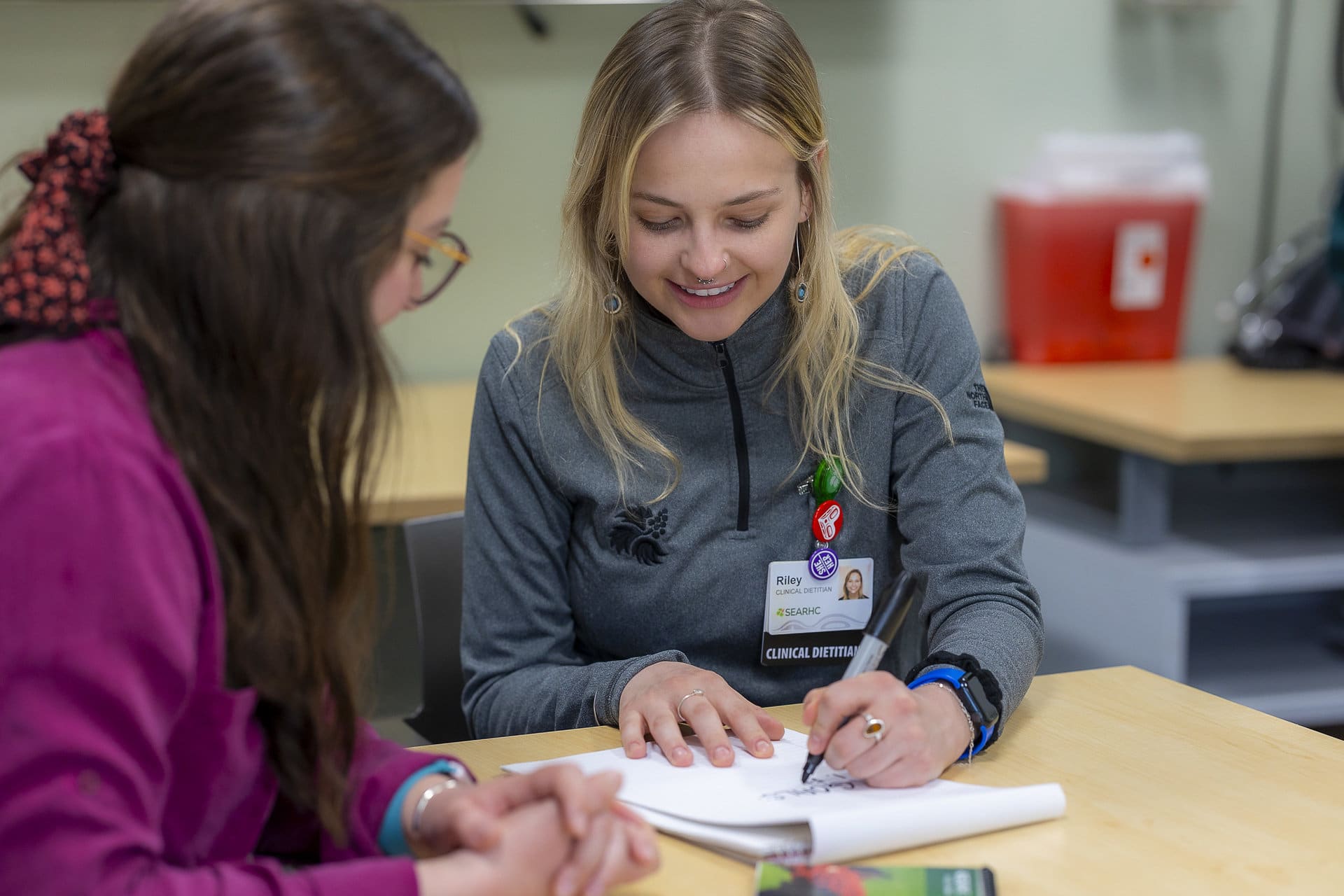Gestational Diabetes
A diagnosis of gestational diabetes (GDM) means a woman has elevated blood sugar during pregnancy. It is important to remember that this diagnosis is not your fault! There are many factors that play into elevated blood sugar levels. For some women, this is a type of diabetes that develops during pregnancy. For other women, this is a type of diabetes that is first identified during pregnancy. The American Diabetes Association recommends that women are tested for gestational diabetes around 24-28 weeks’ gestation.
Many changes happen as the body adapts to being pregnant. These changes make it difficult to maintain normal blood sugar levels. During pregnancy, the growing placenta releases hormones that interfere with how insulin works (insulin is the hormone that lowers blood sugar). This causes insulin resistance (body is less responsive to insulin). Many women can overcome this insulin resistance and maintain normal blood sugar levels by making dietary changes, exercising and/or taking medications.
Diabetes first identified during pregnancy:
Some women may have had elevated blood sugar before becoming pregnant. In this scenario, the first trimester A1c (a measure of your blood sugar for the previous three months) or second trimester glucose tolerance test are lab tests that first identify elevated blood sugar.
Risk factors for gestational diabetes include:
- Family history of gestational diabetes, prediabetes or type 2 diabetes
- Overweight or obese at conception
- Age of 25 years or older
- Non-Caucasian
- Previous large baby (>8lb 13oz), unexplained stillbirth or malformed infant
Short/long-term complications of GDM
Elevated blood sugar levels in the second trimester of pregnancy are associated with increased risk for macrosomia (newborn weighing >9lbs), cesarean section, difficult delivery and neonatal hypoglycemia (low blood sugar).
All women who have GDM are at risk of also developing GDM in later pregnancies and developing prediabetes or type 2 diabetes later in life. Within 10 years of delivery, 20-50% of women with GDM will develop type 2 diabetes. The risk of developing type 2 diabetes increases up to 70% over longer periods. It is recommended that women with GDM are screened for diabetes six to 12 weeks postpartum. If results from postpartum test are normal, diabetes screening should occur every one to three years thereafter.
What can I do to manage gestational diabetes?
- Track your blood sugar levels (first thing in the morning and after meals)
- Identify carbohydrates in your diet and possibly reduce overall carbohydrate intake (a dietitian can help you with this)
- Eat regular meals (don’t skip meals)
- Eat balanced meals (pair carbohydrates with protein, healthy fats, and/or nonstarchy vegetables)
- Move your body, ideally 30 minutes of low-impact activity per day
- Schedule an appointment with a dietitian or diabetes educator
- Partner with your care team to develop the best management strategies
*Everyone is different and gestational diabetes standards and recommendations are subject to change based on your primary care provider’s discretion.





